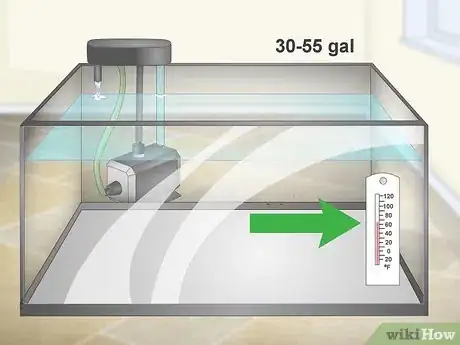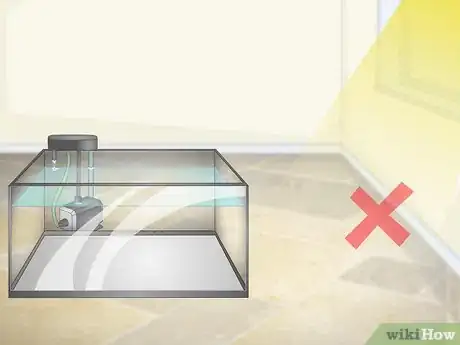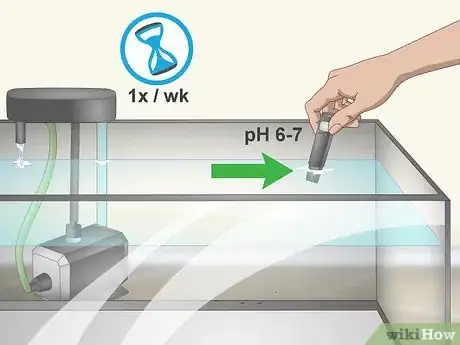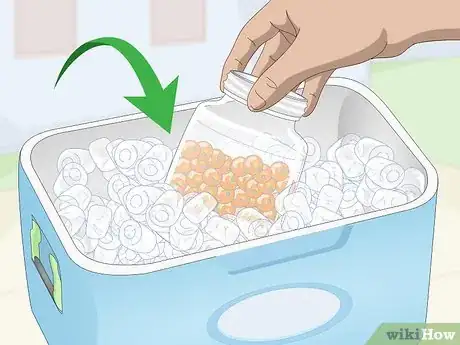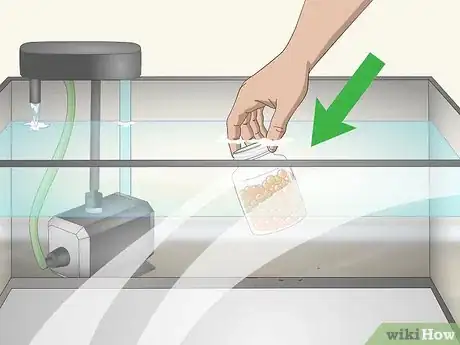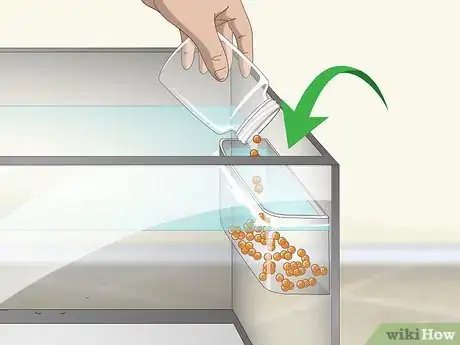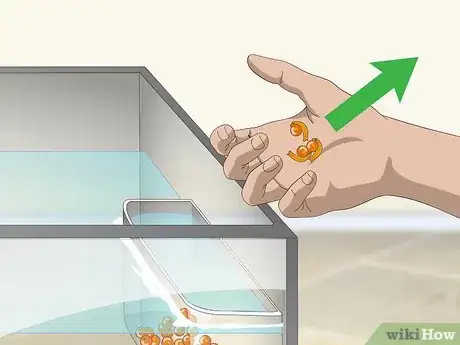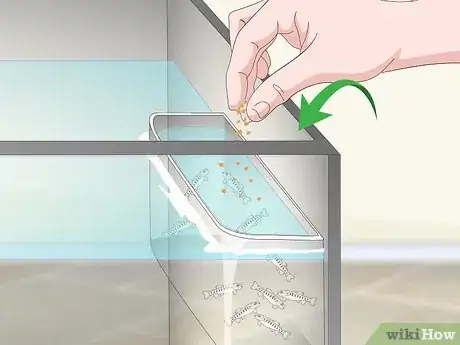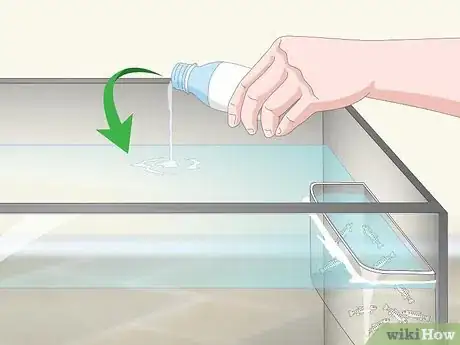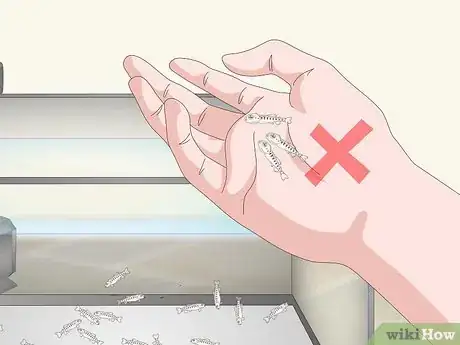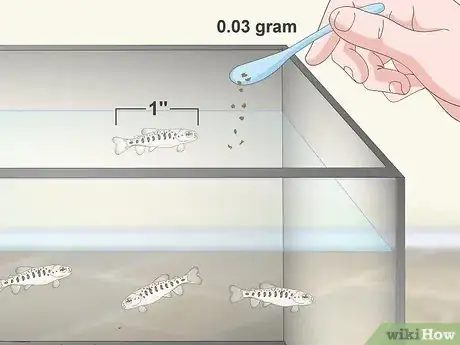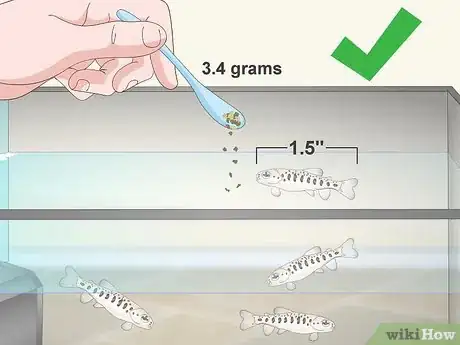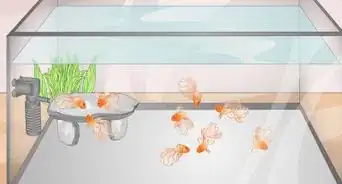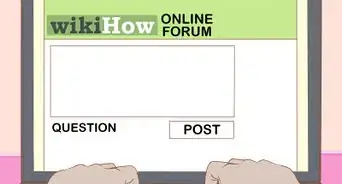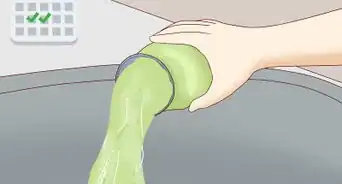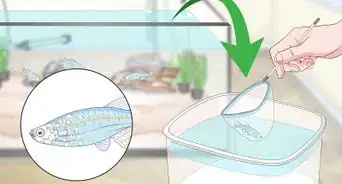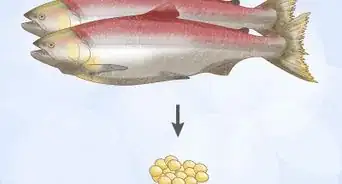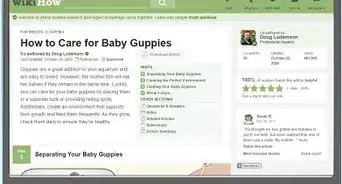This article was co-authored by wikiHow Staff. Our trained team of editors and researchers validate articles for accuracy and comprehensiveness. wikiHow's Content Management Team carefully monitors the work from our editorial staff to ensure that each article is backed by trusted research and meets our high quality standards.
There are 7 references cited in this article, which can be found at the bottom of the page.
This article has been viewed 35,828 times.
Learn more...
Along with tilapia, catfish, and bass, trout is a popular fish to raise for consumption, and you can do so fairly easily using a home aquarium. Afterwards, you can enjoy them in your meals or transfer them into a new aquatic environment if you have plans to move them to market.
Steps
Setting up Your Tank
-
1Assemble your aquarium prior to receiving your eggs. Place your tank on a flat, stable surface like a counter, table, or stand. Set the temperature to 65 °F (18 °C) and add a shot of cleaning solution (like Stress Zyme) to begin the nutrient cycle. Your tank should be between 30 to 55 gallons (110 to 210 L).[1]
- Purchase a dark cloth, a piece of cardboard, or Styrofoam to shade eggs and newly spawned salmon from light.
- Determine how many eggs you're going to raise prior to purchasing your aquarium. In general, every 25 gallons (95 L) of tank volume can accommodate approximately 100 eyed trout eggs.
- Decrease the temperature of your aquarium to 50 to 52 °F (10 to 11 °C) about 12 to 24 hours prior to the arrival of your eggs.
-
2Purchase a chiller designed for larger tank sizes. This is necessary to maintain the water temperature at around 50 °F (10 °C). For example, a ¼ horsepower chiller works with a 55 gallon (210 L) tank. Lower sizes should use chillers with at least ⅓ horsepower.[2]
- Purchase a chiller from online suppliers or local pet stores.
Advertisement -
3Place your tank in a location away from excessive heat and light. If you're placing it next to a window, make sure that the shade is closed until all of your fry are able to swim around.
- Never put your tank next to a radiator (unless it's inactive).
-
4Test ammonia and pH levels using an aquarium testing kit once a week. pH tests should be near-neutral (high 6s or close to 7) or slightly alkaline (high 7s or lower 8 range). Ammonia levels should be nearly 0, although under 2 ppm is safe.
- If your tank's pH is acidic or extremely alkaline, change the water to avoid causing health problems for your fish.[3]
Transferring and Growing Your Eggs
-
1Place your eyed egg jar into a padded cooler for transportation. Bringing your eggs to the aquarium can damage them if you're not careful. Use some foam or crumpled paper to pad your cooler and place your egg jar into it. This will minimize jostling and banging around.[4]
- Use ice that is made from dechlorinated water. If you can't, make sure your ice is sealed in a 0.528 gallon (2.00 L) bottle or Ziploc bag prior to placing it in your cooler.
-
2Remove the entire sealed container and place it into your tank. Your sealed egg container should contain its own water, which will likely be a different temperature than your tanks. Exposing the container to the new aquatic environment gives it time to adjust to the new temperature.[5]
- Acclimation should take between 15 to 30 minutes. Once the tank and jar and within 1 degree from each other, the acclimation process is complete.
-
3Pour the eggs into a hatching basket following acclimation. These net-type baskets can be purchased at pet and aquarium stores. You can also use a vibert box, which are sold at similar locations.
- Even after some start to jump out on their own, let remaining fish continue to learn how to swim and navigate the tank at their own leisure.[6]
-
4Pick out eggs with white or opaque spots twice a day. White spots are areas of fungus on the outer shell that are weak or broken. This fungus spreads very fast and can quickly put other eggs in danger. Opaque spots are a sign that the egg will not develop – they should always be translucent.
- Don't remove eggs that exhibit uniform cloudiness—it's nothing to worry about.
-
5Remove leftover eggs with newly spawned salmon partially exposed. Some salmon spawn, also called alevin, will only partially come out of their eggs. These eggs should be removed, or at least isolated—most of the time they will not hatch.
- Leftover shells from hatched eggs are broken down by fish enzymes into a foam that can gather on the sides of your tank. Scrub this foam off daily using an aquarium sponge to keep it clean.
Feeding Your Trout
-
1Feed your trout 2 to 3 times daily when they begin swimming for food. Look out for trout swimming upwards in the hatching basket, or even all the way out of it. This is a sign that they are in the swim-up fry stage and that you should start feeding them. Spread a small amount of size 0 food near swimming trout, or push it down to them using a plastic paddle.[7]
- You might need to feed your fish on 2 separate sides of your tank to make sure all of them are getting food.
- Wait 10 minutes after feeding and remove remaining food that collects in one area. If you don't do this you risk overfeeding fish, with can create problems with ammonia levels.
- Purchase a turkey baster to collect extra waste and food.
-
2Add a shot of cleaning solution once a week after you begin feeding. Once you begin providing your sac-fry with size 0 food, you should begin giving your tank's nitrifying bacteria a boost.
-
3Unhook the egg basket gently when all trout are eating. Once you notice each trout swimming properly and feeding, remove the basket and place it onto the bottom of the tank. You will notice that some fish continue hiding in the tank – this is normal, and they should eventually leave after a few days.
- Some fry will not learn to feed properly and not survive—this is normal.
- Remove the basket from the tank when you determine that it is completely empty.
-
4Remove fish "pinheads" with big heads and small bodies. Pinheads are fish that never learn to feed. Since they will never properly develop, you can remove them as you find them.
- You might also notice two-headed trout, which can be removed as well.[8]
-
5Feed 1 inch (2.5 cm) fish 0.03 grams of food daily. Once your trout reach this length, you can begin feeding your fish size 1 food. Like size 0 food, you might need to push it down to your fish.[9]
- Use your small paddle to sink the food to your fish.
- Since you're more likely to run out of the latter at the end of the year, finish your size 1 food before beginning to use size 2.
-
6Feed 1.5 inch (3.8 cm) fish 3.4 grams of food daily. At this stage, you can move to size 2 food. Keep an eye out for leftover food, and be careful to never overfeed your fish.[10]
- Once your fish are 2.25 inches (5.7 cm), you can continue feeding them size 2 food—just increase the amount to 10.9 grams of food daily.[11]
- At this length, you can move your fish to a different aquatic environment (such as a rearing rake or pond) if you like.
Community Q&A
-
QuestionHow big can brown trout get?
 Community AnswerThey average 16" - 31", but can reach up to 55" in length and 60 pounds.
Community AnswerThey average 16" - 31", but can reach up to 55" in length and 60 pounds.
Things You'll Need
- Eyed trout eggs
- Aquarium
- Aquarium testing kit
- Aquarium sponge
- Cooler
- Dark cloth
- Cooler
- Dechlorinated ice
- Ziploc bag or 0.528 gallon (2.00 L) bottle
- Hatching basket or vibert box
- Cleaning solution
- Plastic paddle
- Turkey baster
References
- ↑ http://www.troutintheclassroom.org/teachers/technical-information/equipment-list
- ↑ http://www.troutintheclassroom.org/teachers/technical-information/equipment-list
- ↑ http://www.troutintheclassroom.org/teachers/technical-information/trout-care
- ↑ http://www.troutintheclassroom.org/teachers/technical-information/equipment-list
- ↑ http://www.troutintheclassroom.org/teachers/technical-information/equipment-list
- ↑ http://www.troutintheclassroom.org/teachers/troubleshooting
- ↑ http://www.fao.org/docrep/015/i2125e/i2125e01.pdf
- ↑ http://www.nj.gov/dep/fgw/pdf/tic_guide.pdf
- ↑ http://www.troutintheclassroom.org/teachers/technical-information/trout-feeding
- ↑ http://www.troutintheclassroom.org/teachers/technical-information/trout-feeding
- ↑ http://www.troutintheclassroom.org/teachers/technical-information/trout-feeding
- ↑ http://www.troutintheclassroom.org/teachers/technical-information/trout-care
- ↑ http://worldwideaquaculture.com/small-scale-trout-farming-home-based-fish-farms/
